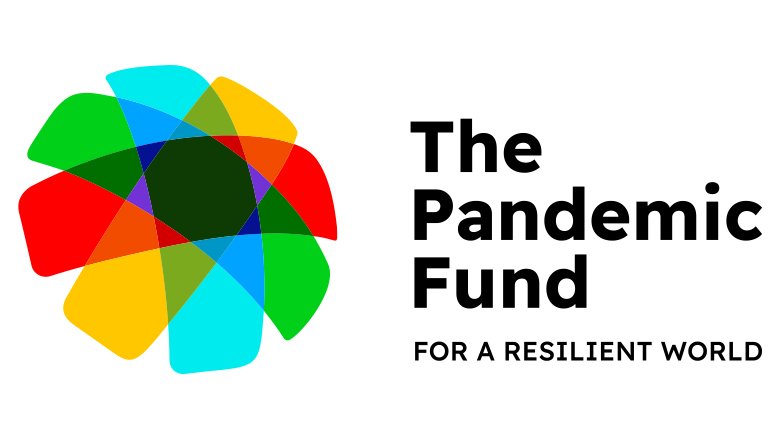This is one of 19 projects to which a grant was awarded by the Pandemic Fund under the First Call for Proposals. For information on the full set of projects supported by the First Call for Proposals, please refer to this press release.
Background
Supported by a $14 million grant from the Pandemic Fund, the Togo Health Emergencies Preparedness and Response Strengthening Project is a partnership between the government and three Implementing Entities (FAO, UNICEF, and WHO). The partnership also includes the International Organization for Migration, Red Cross, and civil society organizations as delivery partners. The Project is expected to leverage $3 million in co-financing and an additional $2 million in co-investment.
Togo is at high risk for the emergence of epidemics/epizootics, including cholera, meningitis, avian influenza, Lassa fever, Ebola, Marburg, and mpox. Its long land borders and high population mobility increase vulnerabilities to diseases spreading across borders. Togo's latest evaluations, including its Joint External Evaluation in 2018, indicated the key gaps in pandemic prevention, preparedness, and response (PPR) capacity in the areas of surveillance, detection, and early warning, laboratory capacity, workforce, and coordination. These are all areas to be addressed by the Project.
Project objectives
The Project’s objective is to strengthen the preparedness and resilience of the Togolese public health system to health emergencies. The Project’s specific objectives are to 1) strengthen the system of detection, early warning and response to epidemics and pandemics; 2) improve the functionality and quality of the national laboratory network for the diagnosis of diseases with epidemic potential; and 3) strengthen capacity in both human and animal health for public health emergency preparedness.
Implementation arrangements and key components
A National Steering Committee will be established to monitor the implementation of project activities. Government participation includes the Ministry of Health, the Ministry of Environment, the Ministry of Agriculture and Livestock, the Ministry of Economy (including Customs and the National Directorate of Public Procurement), the Ministry of Security, including the National Agency for Civil Protection, the decentralized administrative authorities, and the port and maritime authorities. The Project supports activities under three main components. Implementing Entity support is indicated under each component.
Strengthening early warning systems and integrated disease surveillance. This component will improve the existing DHIS2 platform by digitizing early detection systems in real-time and integrating animal health into the platform. Additional activities include developing and implementing contingency plans at points of entry, strengthening community-based surveillance using a One Health approach, developing and implementing an antimicrobial resistance surveillance plan, supporting simulation exercises, and establishing capacity at regional and district levels to store and deliver inputs in the event of a public health emergency (FAO, UNICEF, WHO).
Improving the functionality and quality of the national laboratory network for the diagnosis of diseases with epidemic potential. Project activities will focus on strengthening the system for the secure transport of biological samples, which includes developing standard operating procedures, providing equipment, and training; strengthening quality control of laboratories; developing and implementing a national genomic surveillance strategy; supporting the implementation of sustainable infection prevention and control in health facilities to reduce health care-associated infections; and implementing measures to ensure biosafety and biosecurity in laboratories (FAO, UNICEF, WHO).
Strengthening workforce capacity in both human and animal health for emergency preparedness. This component supports capacity building for the health workforce (epidemiologists, laboratory technicians, veterinarians, veterinary technicians), as well as community-level stakeholders (community health workers, village livestock auxiliaries, community leaders, religious leaders, traditional healers). This will be supported by simulation exercises at the regional and district levels to strengthen Togo’s logistical capacity for emergency preparedness (FAO, UNICEF, WHO).
In addition to these components, the Project will support better coordination of cross-border surveillance between Togo and neighboring countries within the International Health Regulations (IHR) framework, strengthening of national coordination on the prevention, preparedness and response (PPR) to health emergencies, and mobilization of greater funding to sustain and expand PPR activities (UNICEF, WHO).
Expected outcomes
Improvements in early warning and response systems to disease outbreaks, in the national laboratory network for disease diagnosis, and in workforce capacity in the human and animal health sectors are expected to reduce the health, social, and economic impact of future health emergencies in Togo. Efforts to mobilize additional domestic and external resources are expected to result in sustained and expanded investments in PPR over time.
Key Financial Statistics
| Amount Approved (US$) | Total Co-financing (in kind & in cash) (US$) | Total Co-investment (in kind & in cash) (US$) |
| 13,866,125 | 2,901,054 | 2,181,229 |
For media inquiries: Anita Rozowska - arozowska@worldbankgroup.org
For general inquiries: the_pandemic_fund@worldbank.org

